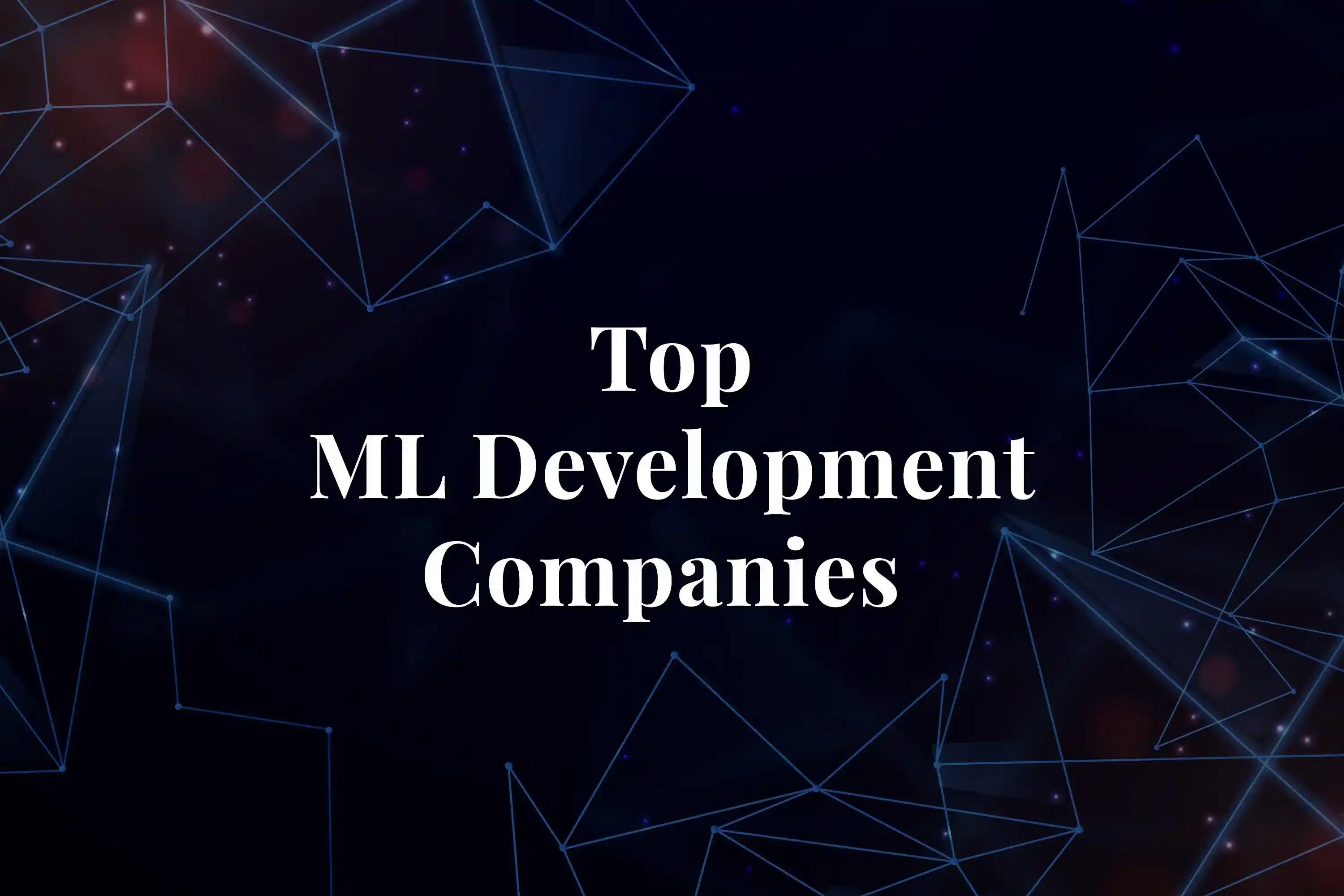If you’re navigating the exciting world of Machine Learning (ML) consulting, you're in for a real treat. The focus here transcends mere algorithms and data; it's about forging new paths for business development. Interestingly, mastering this doesn't require advanced technical expertise. We are here to guide you through the essential steps to make ML work for your business, one easy-to-understand piece at a time.
First off, we’ll talk about setting clear business goals. Indeed, what is the purpose of a journey if it lacks a clear destination? It's essential to have a clear direction for our destination. Considering the rapid growth in the market, with projections indicating that the Data Science and Machine Learning Platforms market is expected to expand to USD 466.3 Billion by 2032, understanding this landscape becomes even more crucial. Then, it's all about framing the ML problem – yes, it’s a thing, and it’s easier than you think. Next up, we delve into the nuts and bolts of data processing – don’t worry, we will keep it light and simple.
We're also going to look at model development. Sounds fancy, right? However, the key lies in crafting a solution tailored to the specific puzzle of your business. Deployment comes next – this is where things start to get real. And finally, we can’t forget about monitoring. Monitoring your business using machine learning is akin to overseeing a garden to ensure optimal growth.
Are you prepared to embark on a journey of business transformation through ML? This guide is designed to simplify the complexities of ML consulting, whether you're exploring the idea or eager to begin. Let's start.
6 Steps of an Effective ML Consulting Approach
Business Goal
In the journey of effective ML consulting, the first and most crucial step is to define and understand the business goal. This initial phase sets the foundation for a successful AI implementation, aligning machine learning objectives with the overarching business strategy.
- Understanding Business Objectives
A deep understanding of the client's business objectives is paramount. What are their core goals? This knowledge helps in tailoring the ML approach to meet these specific objectives. - Aligning AI with Business Strategy
The integration of AI and ML should be in harmony with the business's strategic direction. This ensures that the AI initiatives drive real value and contribute significantly to the business's success. - Defining Business Goals
Clearly defining what the business aims to achieve with ML is crucial. These objectives might include enhancing operational effectiveness, improving customer interactions, or innovation. - Goal-Oriented ML Solutions
Developing ML solutions should be entirely goal-oriented, focusing on achieving specific outcomes that align with the business objectives. - Outcome-Focused AI Planning
Planning for AI and ML should be outcome-focused. This involves establishing clear, measurable goals and defining the expected impact of the AI initiatives on the business. - Strategic Goals and AI Alignment
Aligning ML strategies with the business’s strategic goals ensures that the efforts are not just technologically sound but also business-relevant. - Outcome Planning in AI
Effective outcome planning in AI involves setting realistic and achievable targets, understanding potential ROI, and outlining how AI will contribute to achieving the business goals.
This initial focus on business goals ensures that the ML consulting approach remains aligned with the client's vision, ensuring that the AI and ML efforts drive meaningful and impactful results for the business.
ML Problem Framing
The second critical step in an effective ML consulting approach is ML problem framing. This stage involves identifying the specific problems or opportunities where ML can provide a solution, and it sets the stage for developing a targeted, effective machine learning strategy.
- Problem Identification
The first task is to identify and clearly define the problem that needs solving. This might involve understanding pain points in current processes or identifying areas where ML could create a competitive advantage. - Solution Design
Once the problem is identified, the next step is designing a potential ML solution. This involves conceptualizing how machine learning can effectively address the identified problem, considering both the feasibility and potential impact. - ML Use Cases
Identifying relevant ML use cases is crucial. This involves exploring various scenarios where ML can be applied within the context of the identified problem, ensuring that the chosen use case aligns well with the overall business goals. - Requirement Analysis
Analyzing the requirements for implementing the ML solution is key. This includes understanding the data needs, computational resources, and any other specific requirements that are necessary to solve the problem effectively with ML. - Framing ML Problems:
This involves breaking down the identified problem into specific, ML-solvable components. It’s about translating business challenges into ML tasks that can be addressed through data and algorithms. - Identifying AI Opportunities
Part of problem framing is identifying opportunities for AI to make a significant impact. This requires a deep understanding of both the business domain and the capabilities of AI and ML technologies. - ML Solution Design
Designing the ML solution involves conceptualizing the data models, algorithms, and overall architecture that will be used to address the identified problem.
Effective problem framing in ML consulting is about clearly understanding the challenge at hand and designing a tailored ML solution that aligns with the business's specific needs and goals.
Data Processing
Data processing is a fundamental step in the ML consulting process, ensuring the quality and usability of data for effective machine learning.
- Data Collection
First things first, you've got to collect all the data you need. It's like gathering ingredients for a recipe - you want a variety to ensure your analysis is solid. - Data Cleaning
Once you've got your data, it's time to tidy it up. Think of it as spring cleaning for your data set - fixing mistakes, chucking out duplicates, and filling in the blanks. - Data Analysis
Now, let’s dive into what you've collected. Analyzing your data is like being a detective – looking for clues, patterns, and anything odd or interesting. - Feature Engineering
This is where we get our hands dirty with feature engineering. It's about reshaping and tweaking that raw data to be ready for the machine learning magic. - Preparing Data for ML
Here, we're fine-tuning the data specifically for machine learning. It's like setting up a science experiment – you want the conditions to be just right. - Data Quality Assurance
This step is all about making sure your data is top-notch. It's like quality control in a factory, ensuring everything is up to standard and good to go. - Analyzing and Processing Data
Now, we get into the nitty-gritty, with some serious number crunching and data visualizing. It’s all about understanding every little bit of your data set. - Feature Selection in ML
Finally, it's decision time – to pick the most useful features for your model. It's like choosing the right players for a sports team, so your model can perform at its best.
And there you have it! These steps make sure your data is all set and ready for some serious machine learning. It's all about getting the groundwork right, so your ML project can really shine
Model Development
The fourth step in an effective ML consulting approach is the development of the Machine Learning model, a crucial phase where theoretical plans are transformed into practical solutions.
- Machine Learning Models
Building machine learning models entails designing algorithms capable of learning from data and making informed predictions. This step is where the theoretical aspects of ML are applied to solve real-world business problems. - Algorithm Selection
Choosing the right algorithm is fundamental to model development. When selecting a machine learning algorithm, consider the specific problem, available data types, and the desired outcome. - Model Training
Educating the model entails providing it with data, from which it learns over time. This learning is a repetitive process, during which the model incrementally enhances its predictive or data categorization skills. - Model Validation
After training, the model's precision and efficacy must be verified. This step includes assessing the model with fresh data, evaluating its functionality, and making any required modifications. - Developing ML Models
This encompasses the entire process of creating the model, from conceptualizing the algorithm to coding it into a functional tool. - Choosing ML Algorithms
Selecting the most appropriate algorithm is a critical decision that affects the model’s overall performance and suitability for the task. - Training and Testing Models
Training involves teaching the model to recognize patterns, while testing ensures that these patterns are recognized correctly and can be generalized to new data. - Model Accuracy and Validation
Getting a machine learning model just right is super important. It's all about making sure it's accurate and does what it's supposed to. Think of it like fine-tuning a car - you want it to run smoothly and effectively. That's what makes an ML solution trustworthy and useful.
Deployment
Deployment is a critical phase in the ML consulting process, where the developed model is put into practical use within the business environment.
- Model Deployment
This step involves the implementation of the ML model into a production environment. It’s the stage where the model starts delivering real value by making predictions or decisions based on new data. - Integration with Systems
Effective deployment includes integrating the ML model with existing business systems and processes. The integration should be smooth to guarantee that the model operates efficiently in the larger scope of the business environment. - Deployment Strategies
Choosing the right deployment strategy is key to the success of the ML model. This involves decisions about where and how the model will run – whether on-premises, in the cloud, or as a hybrid solution. - Operationalization
Operationalizing the ML model involves turning it from a prototype into a fully functional component of the business operations. This includes scaling the model to handle real-world data volumes and ensuring it operates efficiently. - Deploying ML Models
Deployment isn’t just a technical challenge; it also involves ensuring that the model aligns with business objectives and delivers the expected outcomes. - Integrating AI into Business Processes
Successful deployment means integrating AI smoothly into existing business processes, ensuring that it complements and enhances these processes rather than disrupting them. - Deployment Best Practices
Following best practices in deployment, such as continuous monitoring and regular updates, ensures that the model remains effective and relevant over time. - ML Model Operationalization
The ultimate goal of deployment is the operationalization of the ML model, ensuring that it not only functions correctly but also delivers practical, measurable benefits to the business.
Deployment is the bridge between a developed ML model and its practical application, turning intelligent insights into real-world business value.
Monitoring
Monitoring is the final, ongoing step in the ML consulting approach, vital for ensuring the model's continued effectiveness and relevance.
- Model Monitoring
Continuous monitoring of the deployed ML model is essential. This process involves tracking the model's performance in real-time to ensure it operates as expected and delivers accurate results. - Performance Metrics
Monitoring includes keeping an eye on key performance metrics. These indicators offer a clear understanding of the model's performance and its alignment with the goals established in the early phases. - Continuous Improvement
The goal of monitoring is not just to track performance but also to identify opportunities for continuous improvement. ML models can drift over time, and regular monitoring helps in fine-tuning the model to maintain its accuracy and effectiveness. - Feedback Loops
Integrating feedback loops into the monitoring process is crucial. Feedback from the model's outputs and user interactions can be used to make iterative improvements. This feedback mechanism ensures that the model remains dynamic and adaptable. - Monitoring ML Performance
Effective monitoring of ML performance involves not just technical tracking but also evaluating the impact of the model on business processes and outcomes. - Tracking Model Metrics
This involves a thorough examination of metrics such as accuracy, precision, recall, and F1 score for classification models, or mean squared error in the case of regression models. - Iterative Model Improvement
Monitoring is an iterative process. Based on the insights gained from performance tracking, the model can be continuously improved, ensuring it stays relevant and effective. - Feedback Integration in ML
Integrating user and system feedback into the ML model helps in fine-tuning and adapting the model to changing conditions and requirements.
Monitoring is the key to maintaining the longevity and relevance of ML models in a business context, ensuring they continue to add value and drive decision-making long after deployment.
Conclusion
Diving into machine learning consulting is all about staying sharp with the latest tools and tricks. Every step matters big time, from setting your business goals to keeping an eye on the models you roll out. When you nail your ML consulting strategy, the boost in efficiency and productivity can make a huge difference to your business's success. Keeping up with the ever-changing world of ML tools and tactics isn't just helpful, it's super important. It makes sure the solutions you create are not just cool and new but also work well and make sense for what you need. just remember: the way you tackle ML consulting can really turn hurdles into chances for something amazing, driving your business to new heights in our world that's all about data.
Codiste specializes in Machine Learning consulting, offering tailored solutions to enhance your business intelligence. Our expert team harnesses cutting-edge AI to optimize operations, drive innovation, and unlock new opportunities. Partner with Codiste for transformative machine learning strategies.






